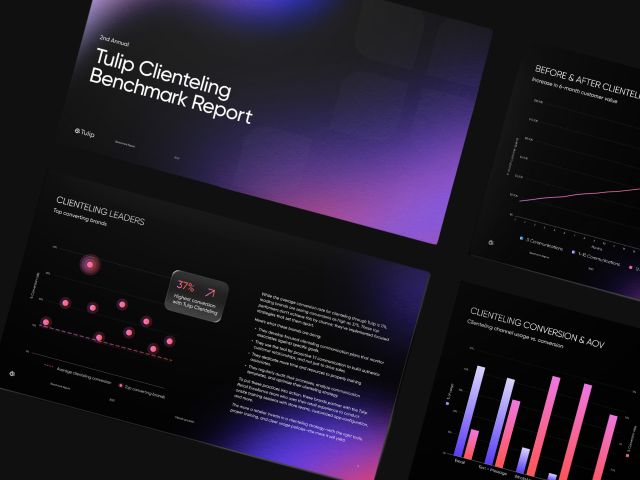Just as “omnichannel” is a word that is overused in discussing retail, “intimacy” in retail seems the exact opposite: out of place or rarified. It’s easy to believe that the intimate customer shopping experience just doesn’t exist anymore, that it’s unwanted, or that it occurs only in the realm of the ultra-luxury brands. A quick search of the word intimacy and its synonyms reveals: closeness, togetherness, affinity, rapport, attachment, familiarity, friendliness, friendship, amity, affection, warmth, and confidence.
When applied in the sense of retail, intimacy means the opposite of anonymity. Engagement between a store worker and a store visitor often begins and ends cold, but occasionally, a caring associate sees a customer in need of assistance, reaches out to help them, and a warm and friendly exchange occurs.
Online shopping, on the other hand, has basically removed the intimacy from retail. Historical customer data and click history are used in an attempt to personalize the experience and “predict” what the customer might want. Compare that to the store experience where a friendly associate can start a conversation and ask a few simple questions… what are you looking for, who is it for, what colors do you like, what’s important to you… to “know” what the customer wants or needs. No analytics or machine learning engine can possibly figure out the exact context of a shopping session nor the exact needs and precise decision criteria.
In other words, human insights trump digital insights. To put a finer point on it, in the modern world of retail, intimacy is the difference between being known, instead of being known about.
Customer-Centric and Value-Centric Data Practices
Marketers have made an art form out of the collection of customer data; so much so that they are now imperiled by the amount and depth of what they know about people. One needs to only look at the GDPR to understand the backlash that surrounds how much data has been collected—often without the knowledge or consent of the individual. But as much as the collection of data has been an art, its actual use has been a science experiment gone badly awry. We have come to use a person’s data to do things to them instead of doing things for them.
Understanding that a person’s data is their property, and that if we come to possess some knowledge about them it is a privilege not a right, is a challenging thought in today’s data-centric world. Retailers need to refocus how they use a customer’s data to be far more customer-centric and value-centric. Most shoppers would be happy to share information if they believe the information would be used to produce the right purchase decision or that sharing data would lead to a more convenient or money-saving experience. Most retailers realize they should not abuse the private data that they have access to, yet the focus on driving sales often takes higher priority. Retailers need to stop this. To quote Ana Andjelic & Rachel Conlan of Havas, “Use data like a butler, not a stalker.”

It is critical to realize that the difference between being helped and being stalked is totally in the eye of the customer at any given moment; which brings us back to intimacy. For many of my buying journeys, I (and probably many of you) want to be left alone. The digital and social world has made me a very competent buyer. Retailers and brands have imparted deep knowledge about features, functionality, reliability, convenience and pricing on almost every product and service out there. In other words, I know what I want and where to get it and the retailer simply needs to facilitate the transaction quickly and as conveniently as possible.
In some cases, I may want some basic online assistance in the form of a digital suggestion or comparison engine to help line up the options and compare the variables. Other times, I may want the digital engine to help remind me of what I bought and when I might need it again.
But there are absolutely those journeys where I want and need human help. I want the situational context of the journey I am on to be understood. I want to be known as well as known about. And when I am on one of those journeys, intimacy really matters. Again, the amount of intimacy needed during a given journey is set by the buyer, not the retailer. It could be when buying the perfect tuxedo for my oldest daughter’s wedding; or it could be helping me untangle the mess of options I created for myself while searching for the perfect television and home entertainment system. Interestingly, access to data by the store associate can make the shopping experience more intimate, not less. Since that online information about my past purchases or what I was looking at online brings more context to the engagement and leads to a more intelligent conversation and more often than not, an expedited purchase saving everyone time.
This combination of digital insights and human insights is really the exciting part about omnichannel shopping journeys. Data from online and in-store activity can be integrated and used to enhance customer intimacy regardless of which channel the customer is currently using.
In-Store and Online Data, Better Together
Retailers know a fair amount about consumers from their online shopping. This digital data is tracked and often fed to predictive engines that generate insights on how to facilitate the customer’s digital experience.
But what about the full range of knowledge gained from every interaction in physical stores? Many store visits offer the opportunity to gather insights about what I’m buying and why. As I mentioned, with a few pointed questions, store associates can gather valuable information and even capture it in a digital customer profile for future use. My brand and style preferences across casual, business or formal occasions can all be captured.
The problem is that in-store data about the customer’s journey is rarely digitized. Consequently, online and in-store channels suffer. Online customer profiles are generated primarily from online activity; they rarely benefit from information gathered by store associates about customers. Store associates don’t often use intelligence from prior online purchase activity when serving in-store customers. And unless the store associate has an incredible memory and serves every in-store customer, they typically cannot access the customer’s prior in-store activity either.
The Future of Retail Intimacy, Enhanced by Technology
The exciting part is that these retail problems are solvable. It is now possible to:
- Gather and digitize useful information about the customer during their in-store visit.
- Combine online and in-store customer data to create a more holistic and unified view of the customer.
- Use online and in-store data to feed predictive recommendation engines.
- Share customer insights in real-time with associates to enhance the in-store experience.
If we dare to link the digital, the physical and the human in a virtuous loop of trying to help the customer, we achieve a degree of retail intimacy that can truly separate a retailer from the pack.
Think about it. When a customer is on a journey of speed and convenience—and they want low touch and high efficiency—the machine-learning AI/engine can be much more effective in making a suggestion. That’s if it uses all the hard data points (digital and in-store) along with the human insights gained by sales associates (that pair of shoes were a gift and do not reflect her personal style). Equally on an intimate journey, where human interaction is desired, placing the collected data in-store and online, along with the AI insights at the disposal of a sales associate empowers them in a way only imagined today.
This might sound like an unattainable utopia, but it’s not. More importantly, a retailer does not need to deliver on 100 percent of this vision today to start standing out from the crowd. Incrementally bringing the experiences together, improving the touch points as we’re able to, will deliver noticeably improved retail experiences today.
If you’re a retailer, find the right partners, assess where you are today in people, process and technology, and map out a path to continuous improvement towards this kind of modern intimacy. It’s not a dream. At Tulip, we’re doing this with our clients right now. We can work with your team to create the assessment. We can provide clarity of what’s needed to drive the change and lay out the plan to get you there.
Bringing it all together
The new world of retail is exciting. It has the potential to re-invent much of what our post-Amazon perceptions have come to be. Store associates can deliver more intimate customer experiences, enhanced by technology in the form of information. Mobile devices with access to the right mobile tools, empower associates to save time, add more value and delight customers with their knowledge and efficiency. It’s time to stop dreaming and start doing. Tulip believes in this passionately, and we’re committed to re-inventing retail with tangible results and measurable success for our retail partners.
Read More: The Return of Intimacy in Retail – Part 1


